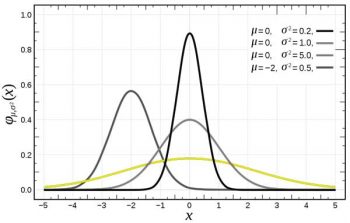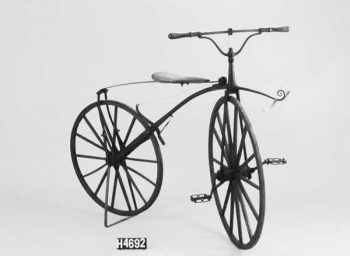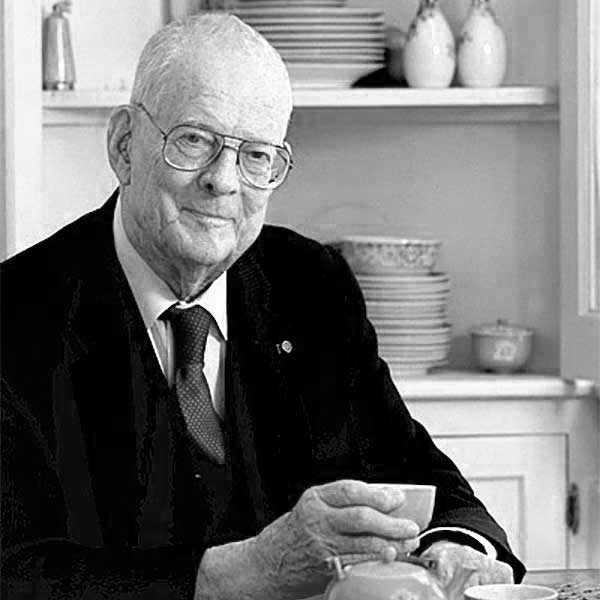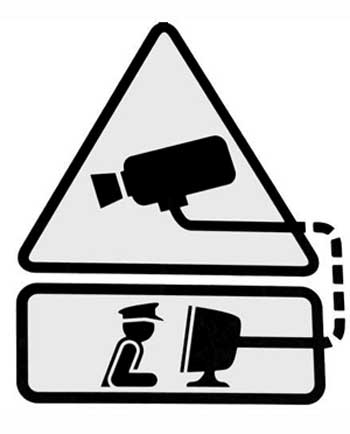Noise proof
Among the gurus of Quality Assurance there was a Japanese man by the name Genichi Taguchi, who has only recently left this world, in June 2012. Being an engineer and a man of wide outlook, he realized the most profound thing any manufacturing organization must understand about its processes. In fact, his insights may easily be expanded from manufacturing to service, organizational or any processes in general: every process is influenced by external noise factors.
Before Taguchi (and after him, too) everyone spoke only of the process parameters, which we vary in order to influence the end result. And here, for the first time, a very prominent quality guru has come and declared: it is not the parameters but the noise which creates the problems. It is not the parameter but the noise that makes the difference.
At this point, allow me to pause and define noise.


What is noise?
Noise is defined as a physical factor affecting the process results, whose size, timing and length of operation are unknown to us.
That is, we know some factors exist which may affect our process in some way. For example: environmental conditions, seismic activity status, changes in raw material, non-uniform application of force by an operator… There is no process unaffected by noise factors. We know these factors exist, and that they affect our process to some extent.
What we do not know is:
- when they begin acting;
- when they stop;
- what is their strength during action;
- or even whether or not it is uniform.
Alright, you could say, so he has known that, good for him. But if we don’t know all the above, how would that help us at all?
Well, awareness is half of the solution.
The effect of noise on process variance
Not only did Genichi Taguchi know of the existence of the noise factors, which most engineers and managers today are not aware of. He also realized these noise factors affect the process variability, namely they increase variance by adding what is adhered to as “random variance”.
If we do not know when a factor begins acting and with what force, we won’t be able to predict its action, to foresee it. This means unknown forces would be introduces into the process unpredictably and act on it for a time period which we cannot foresee in advance. During that time the process products will not be as they would be without the action of noise factors. They may still be conforming or they may not. In other words, we have random variability, differences we can neither predict nor control.
So why haven't we seen the effects before?
In the course of our daily jobs, we need to analyze the processes and the causes of non-conformance. We analyze every non-conformance and problem, and create a Pareto chart, as you all know. All the contributing factors in the chart, except one, include problems which repeated enough times to enable us to find some common cause, if we look hard enough. And there is always a section (often quite significant) called “other”, which includes… random non-conformance. And what are those? They are non-conformance whose appearances are too few, for too short a time, with no discernible pattern. This is what the term “random non-conformance” means.
But there is nothing we can do about those, you may say. There will always be random non-conformance, appearing too few times, with no discernible pattern.
Genichi Taguchi thought otherwise.


Taking preventive measures
How’s that possible? Simply, we must take the noise factors into consideration during the product design phase.
But we don’t know their action strength, beginning or ending, right? So how can we take the noises out of the equation?
His answer was that we do not need to take them out of the equation, but instead, make a new equation, including them in it. We know the noises exist, so it’s pointless to try and ignore them. We can identify them, and if we cannot – we need to properly study our process. We can even estimate some of them upon their appearance, and if we cannot yet – we should perform an analysis and do so.
We must design our product to be robust, or noise proof. In other words – to not be sensitive to the noise, when it appears. To nullify the effect of the noise on the process output by redesigning the process.
Do not try to fight the noise
Most of the people who are aware of the noises spend their lives trying to neutralize them, eliminate them, “take them out of the equation”.
Taguchi knew there is no point at all to try and take the noises out of the equation. He understood that the existence of noises is part of the laws of the Universe. The noise exist, it appears and disappears according to the laws of nature, and both we and the process are part of nature as well. Therefore it would be pointless to fight the laws of nature and try to prevent them from occurring.
On the other hand, if we accept the laws of nature and work with them instead of against them – we can find a way to eliminate the sensitivity to noises, despite their continual existence. They would simply no longer affect the process! They would not increase designed process variability, which would in turn allow true process control, without random variance.

Robustness = immunity, non-sensitivity to noise
We are all familiar with the idea, it is no stranger to us, to say the least. Take, for example, the public dispute on vaccination. That’s right, vaccination against diseases, such as most childhood diseases, for instance. And what is vaccination? It is a mechanism which lowers the body’s sensitivity to some external factor, a microbe or virus. The amount of microbes or viruses around us shall not change, they will continue to surround us, as usual. We, simply, shall no longer be adversely affected by them, shall not develop a response, such as a disease. I do not intend here to go into the issue of whether it is good, bad or otherwise to vaccinate. It is merely an example of a way to make something immune, robust.
If a process is sensitive to shaking, let’s introduce shaking on purpose, see what the effect is and then eliminate the process sensitivity by adding a damping bed of the required strength. So what if shaking exists? So what if we do not control it? The process is no longer affected by the shaking. It is robust, immune to shaking. Shake away, see if I care!
If a process is sensitive to humidity, let’s do the same thing. Let’s see how sensitive it is, how humid can the conditions get, and eliminate the sensitivity by building humidity control into the process, or the workshop it is at. The process would become robust, immune to humidity!
If the process is sensitive to a changeable force the operator exerts, let’s design a go-between mechanism which makes the force uniform. Now the process is robust, it is no longer affected by the difference between operators, or even the non-uniform application by the same operator. A simple example of this is the use of an electrical screwdriver vs a manual one.
If our process is sensitive to mistakes in components assembly, namely some components may be assembled, say, in a wrong orientation, let’s introduce a mechanism which only allows assembling the component in correct orientation. Thus it becomes insensitive to component orientation assembly.
But we cannot solve every problem
I can hear some people say: “But not everything can be solved”. Allow me to disagree.
As I have already mentioned in my article “Translating the impossible”, when people tell me “This is impossible to do” I know their true meaning, which is one of the following two:
- I do not know how to do this
- I haven’t found the way to do this, yet
So the question whether we can or cannot find the solution depends on which of the two options you choose to adopt: if the first – then you would not be able to discover a solutions, except by accident; but if the second – there is no doubt whatsoever that a solution will sooner or later be found, as long as you keep searching.


This requires resources, we cannot afford to do it
Indeed, in order to do anything at all we must always invest something. So let me put it this way:
Do you really think that not searching does not cost money or require resources? Do you really think you can afford to not search?
As long as your process is sensitive to noise – you do not know what is happening from one moment to the next. It has random variability. To remind you, true process control is only possible if no random variability exists. So not searching for a way to eliminate process sensitivity is costing you every single day. You just continue ignoring it, by calling it “other” and not doing anything about it because of the “too few occurrences”, because there is no pattern, because you have no clue as to how to prevent it. Therefore I shall ask again:
Do you really think you can afford to not search? Robustness is not a luxury. It is the key to success.
Hidden costs
Taguchi has gone the extra mile and shown us the connection between cost and variability.
He said that everything which does not meet the nominal (target) value of the specification, and most products do not, is costing us. True, the product may not be considered non-conforming in any direct or perceivable way, but the very fact of its being removed from the nominal value of the specification means that at a certain time, in a certain combination, it can bring about non-conformance. The probability for non-conformance grows as the distance from nominal value of the specification increases, namely – as the variance grows. This dependence is of the second order, parabolic.
It means that despite the output falling within the set tolerance limits, we pay a price growing by square ratio as the distance of the output from the nominal value of the specification grows.

The conclusion is obvious: in order to lower the cost we must lower variability! And the most basic way to lower variability is to eliminate the process sensitivity to noise.
This is a law of nature. It works in the same way in our bodies, protecting them from illness caused by external factors. It works in the same way in communication, where we must overcome cultural differences, language gaps and whatnot in order to understand one another correctly. It works in the same way when we cannot concentrate due to external noise (!) around us and make mistakes. It works the same way when crops are failing because of lack of seasonal rains or vermin.
If Taguchi has seen this and passed on to us his insights, can we afford to not hear him? To not adopt his legacy?
Can you really afford to not search for a way to noise-proof design?
Graph of normal distribution taken from Wikipedia.
Old bicycle picture: Michaux-type velocipede or boneshaker bicycle, c.1869. Original image taken from the MAAS Museum of Appled Arts and Science website.
Animated picture from Sigma Definitions website page on Taguchi Loss function.
This post is available also in:
 עברית
עברית
You may also find interesting:
Powered by Contextual Related Posts











